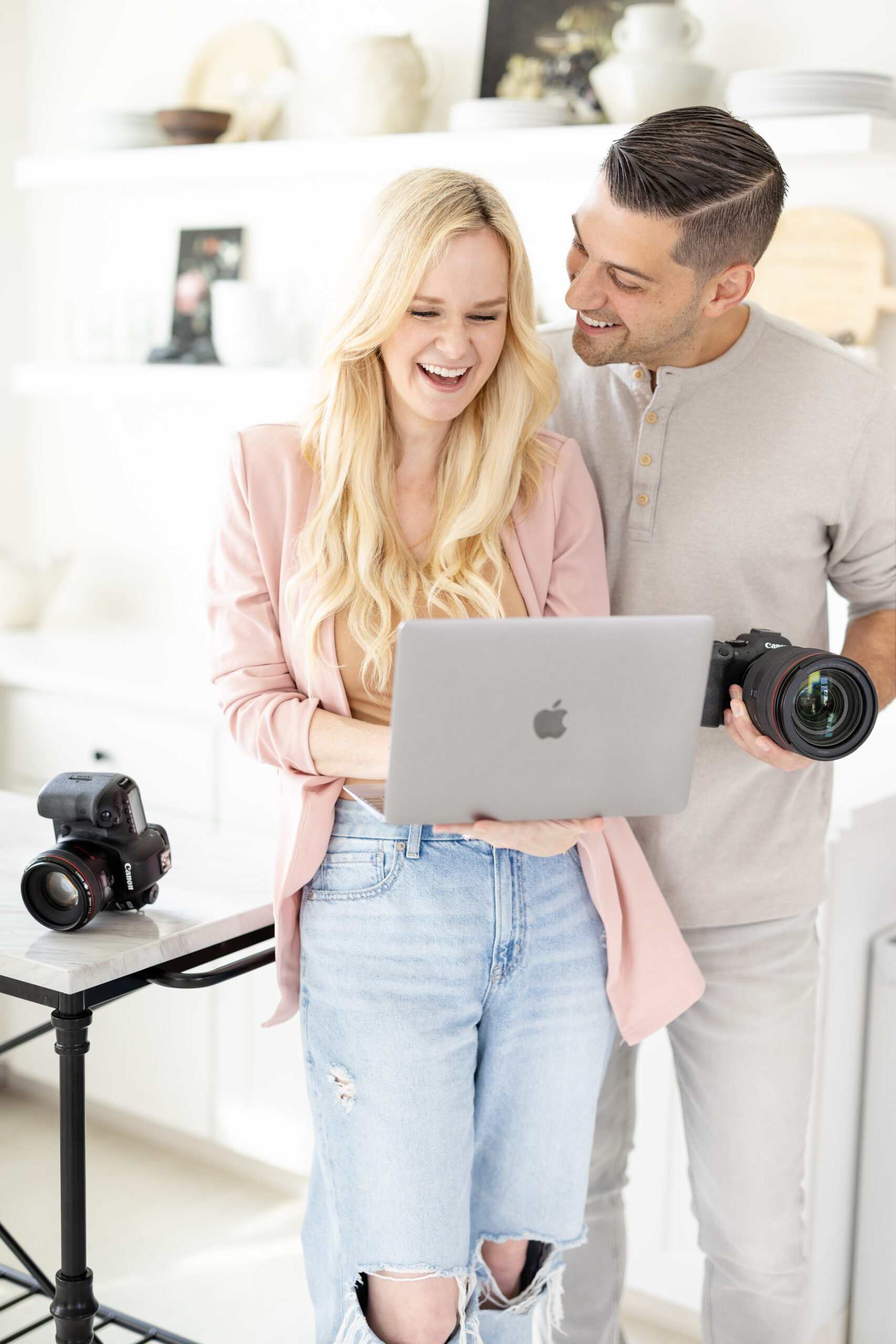When we were new, we would hear other photographers look at a professional shot and say things like this:
“Killer bokeh!”
We’d nod. But inside, we were thinking…
Killer WHAT?!
They’d say, “The background is so soft!”
But you can’t touch it…
“It’s so creamy and dreamy!”
Like a Wendy’s frosty?
We were SO confused.
If you’ve ever felt that way (or feel that way right now), we want you to know a few things:
– You are not alone.
– You are in the right place.
– You are in good company!
When we were learning photography, it felt like were learning a foreign language.
There were so many words we’d never heard before (like bokeh and aperture).
And SO.MANY.BUTTONS.
That we didn’t know how to use.
It wasn’t fun like this!
It was honestly pretty overwhelming.
It definitely made us feel insecure and wonder if we’d ever figure it all out.
That’s normal.
We wish someone would’ve told us that.
So we’re telling you!
We love telling YOU the stuff we wish WE knew at the beginning of our photography journey.
Hopefully it’ll help you fast forward the hard stuff and skip right to the good part!
Speaking of the GOOD PART…
One of the most FUN things about using a professional camera and lens is creating images where your subject is in focus and the background is blurry.
That’s what photographers mean when they say…
“The background is so soft!”
“It’s so creamy and dreamy!”
All they’re saying is…
The background is so blurry in relation to the person in focus.
As for bokeh?
It’s the blurry part of the image and usually looks like little circles in the background (or sometimes foreground).
So as photographers, how do we get those, soft, creamy, dreamy blurry backgrounds?
There are many ways!
Let’s dive into one simple way to get dreamy backgrounds today!
Shoot with lower apertures (like f/1.2 – f/2.8)
As a general rule, the lower your aperture, the more blurry the background will be.
If you ever hear someone say they love shooting “wide open” here’s what they mean…
They love shooting at their lens’s lowest aperture number.
Whenever you’re looking to buy or rent a new lens, remember that the lowest aperture number of your lens will always be at the end of the lens’s name.
For example, if you’re shooting with a 50mm 1.2 (one of our favorite lenses), shooting “wide open” would mean shooting at an aperture of f/1.2.
If you have an 85mm 2.0, wide open would be f/2.0.
If you have a 24-105mm 4.0, wide open would be f/4.
Aperture isn’t the ONLY thing that affects how blurry your background is, but it’s definitely an important factor.
So why wouldn’t you ALWAYS shoot wide open, then?
Glad you asked!
Aperture also determines how much of your photo is in focus.
So if you’re taking a family portrait, shooting wide open might mean accidentally getting blurry faces.
We LOVE blurry backgrounds, but NOT blurry faces!
That said, shooting with a wide aperture can make for some very dreamy, creamy backgrounds.
Bride & groom photo taken at f/2.0
Senior girl photo taken at f/1.2
And THAT is why we LOVE shooting with wide apertures!
We’re excited to see what YOU create at your next session!
SHOOTING & EDITING COURSE
If you want our complete system for creating dreamy photos, we walk you step-by-step through it all in our signature Shooting & Editing Course, which you can learn more about by clicking here!



